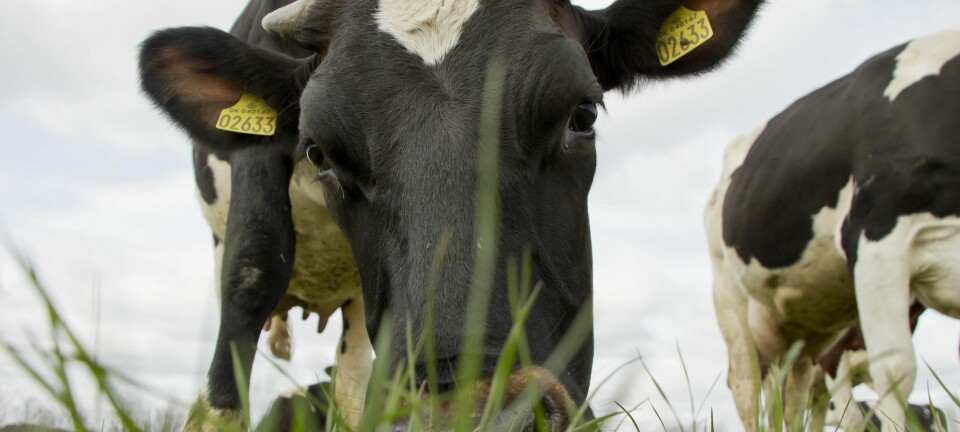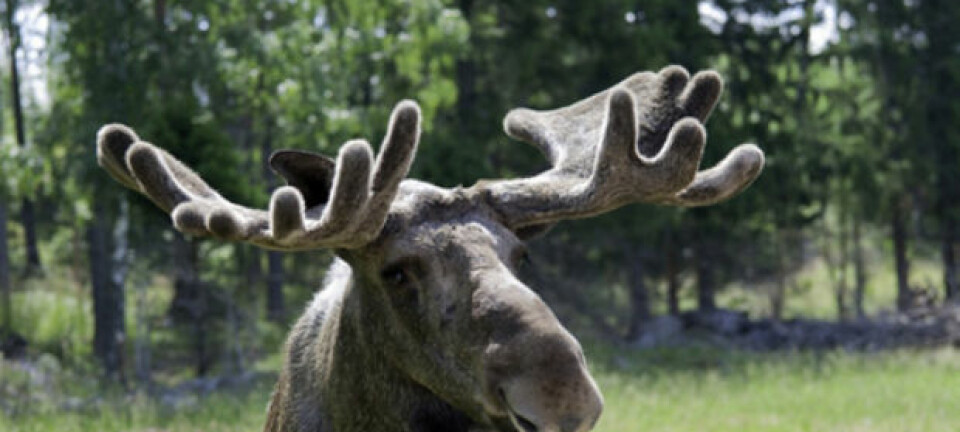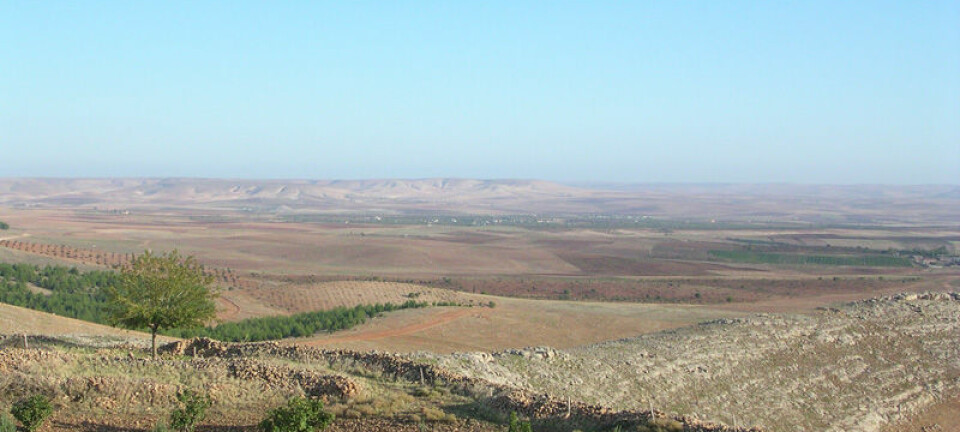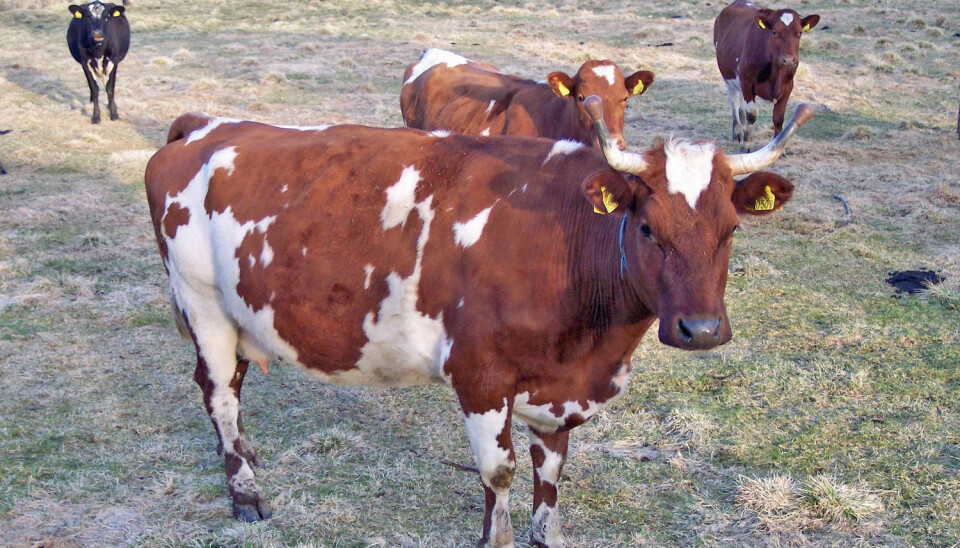
Biggest threats to farmers have four legs
Big animals are more dangerous for Norwegian farmers than even-bigger tractors, a new analysis shows. Cows are the chief culprits, causing the most work accidents on Norway's farms.
Denne artikkelen er over ti år gammel og kan inneholde utdatert informasjon.
Farmers always have work to do; they are always rushing from one chore to another, toiling away at all hours, even when they are sick. They can be distracted and take unnecessary chances.
Daily life on the farm is risky. The biggest danger is not from heavy machinery, however, but from cows.
“Cows are large animals and you never know what they are going to do,” explains Senior Researcher Oddveig Storstad from the Centre for Rural Research, in Trondheim, Norway. The Centre teamed up with the International Research Institute in Stavanger (IRIS) and Trondheim’s St. Olavs Hospital to survey accidents and working environments on Norwegian farms.
The numbers are surprising. Every year eight percent of all Norwegian farmers have an accident while working. Twice that amount – 16 percent – experience a near-miss. Family members and farmhands also suffer lots of injuries.

According to the 2012 Agriculture and Occupational Health Survey, some 2,700 Norwegian farmers are injured in work accidents annually. But these figures don’t tell the whole story.
“We have a large, representative cohort. But when we ask about accidents that happened within the last 12 months, chances are that the farmers have forgotten a cut finger or even a sprained foot. Eventually, farmers remembered one serious accident after another, months back, during the course of our qualitative interviews. Everything suggests our numbers represent a bare minimum,” explains Storstad.
Four-legged foes
One in every three accidents happens in a barn. About a fourth of all accidents that happen to farmers and about half of those that happen to their children while on the farm occur when working with animals.
In a little over 18 percent of all agricultural accidents, the farmer was working with cattle at the time of the incident. This makes these animals more perilous than tractors, combines, chainsaws, ladders and strong chemicals. The bovine threat is all the more serious given that not even everyone who responded to the survey worked with cattle – three in every ten farmers had none.
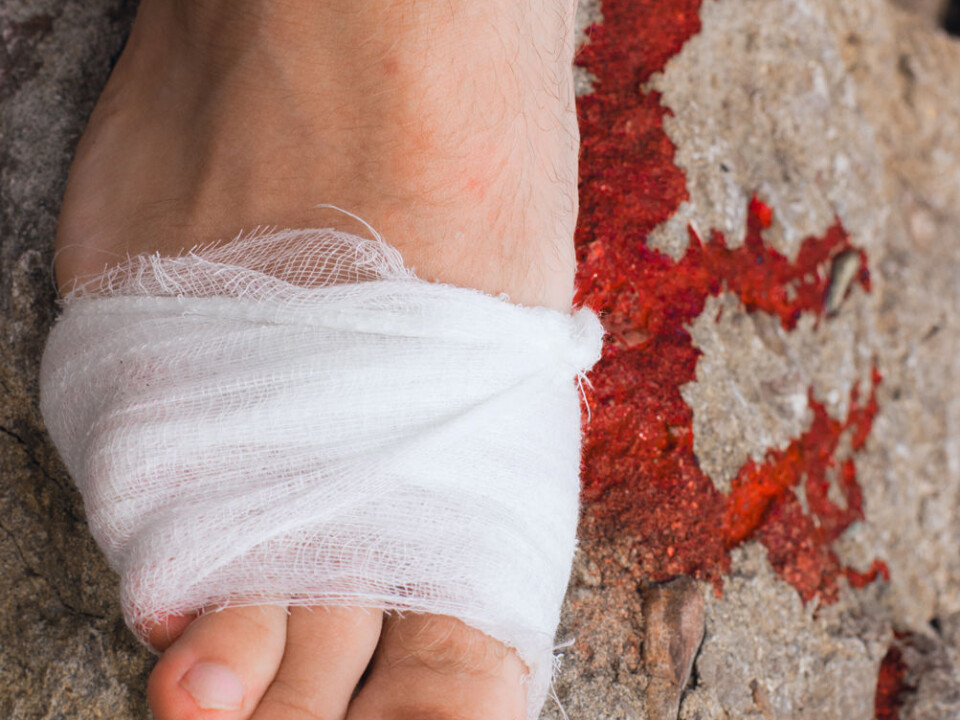
“People are very conscious of the animals but accidents still happen. In some cases something needs to be attended to and the farmer is working solo and doesn’t want to wait until someone can come and lend a hand,” Storstad said.
“Robotic milking machines are becoming increasingly common, for example. That means in the wink of an eye you can be squeezed between a cow and the machine. A lot of accidents in agriculture involve being crushed,” she says.
Unfocussed
Farmers blame themselves for these mishaps. Seven out of ten can be attributed to the farmer's inattentiveness, haste or taking unnecessary risks. Inadequate safety measures and incorrect work positions cause many accidents.
“Farmers don’t take this lightly and they are usually cautious. But their work is quite demanding,” says Storstad, listing the wide variety of tasks on the farm and the pressure, especially during the busy summer, with potential risks all round.
“There is nothing in the data that suggests Norwegian farmers have a casual or macho attitude to HSE. They take this seriously. One thing we don’t see in the statistics are all the near-misses, accidents that almost happened, including times when in a risky situation the farmer reconsiders, stops and waits until a neighbour can help him or her move the animals,” says Storstad.
Working when ill
Some of the questions in the work environment survey were also asked in a 1982 study. The comparison is not always rosy – in several areas the work environment appears to have declined over the past 30 years.
Among other things, two out of three farmers work even when they are ill. That is three times the rate in 1982, a number that was discussed in a reference group meeting, Storstad said.
“We speculated whether much of this can be attributed to the fact that farmers are more likely to work alone now. Their wives are employed elsewhere, there are fewer people who can help in the barn, and perhaps the system that provided substitute workers to help farmers was better back then. Norwegian agriculture has changed enormously over the past 30 years,” she said.
More farmers say they work with tighter margins than they did three decades ago, and even in poorer light. Machines and equipment are even heavier and more unwieldy than they once were. The latter came as a surprise to the researchers.
“A lot indicates that farmers are eager and willing to invest in machinery. Norwegian farmers have always been that way,” says the researcher.
Registering accidents
One goal of the Agriculture and Occupational Health Survey of 2012 was to hammer out a system for recording farm accidents.
“We need to find solutions that are as simple as possible and avoid a bunch of new forms for farmers to fill out. But we are in dire need of a way to get statistics and a better overall perspective on what is going on on the farm,” says Storstad.
She says that campaigns to change attitudes and habits have been known to help when it comes to agricultural work accidents.
“Historically we can see that when the number of accidents first drops, it plunges, and then figures rise again gradually. This suggests that an issue caught farmers’ attention so that they took precautions," she said. "We’ve had this trend confirmed by our international partners.”
----------------------
Read the Norwegian version of this article at forskning.no
Translated by: Glenn Ostling







